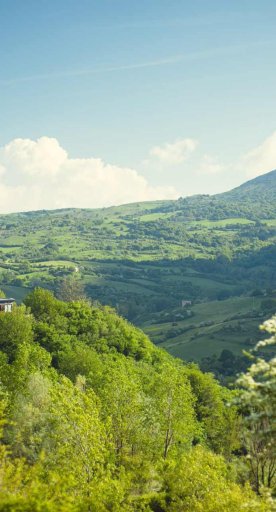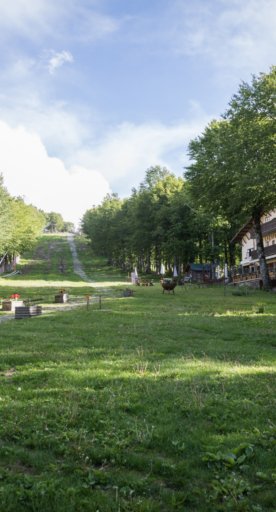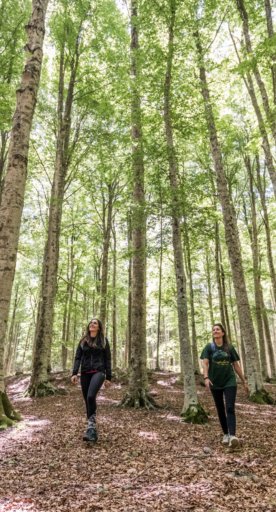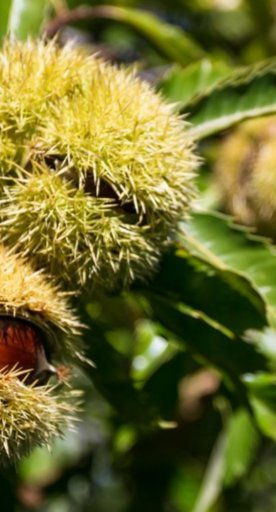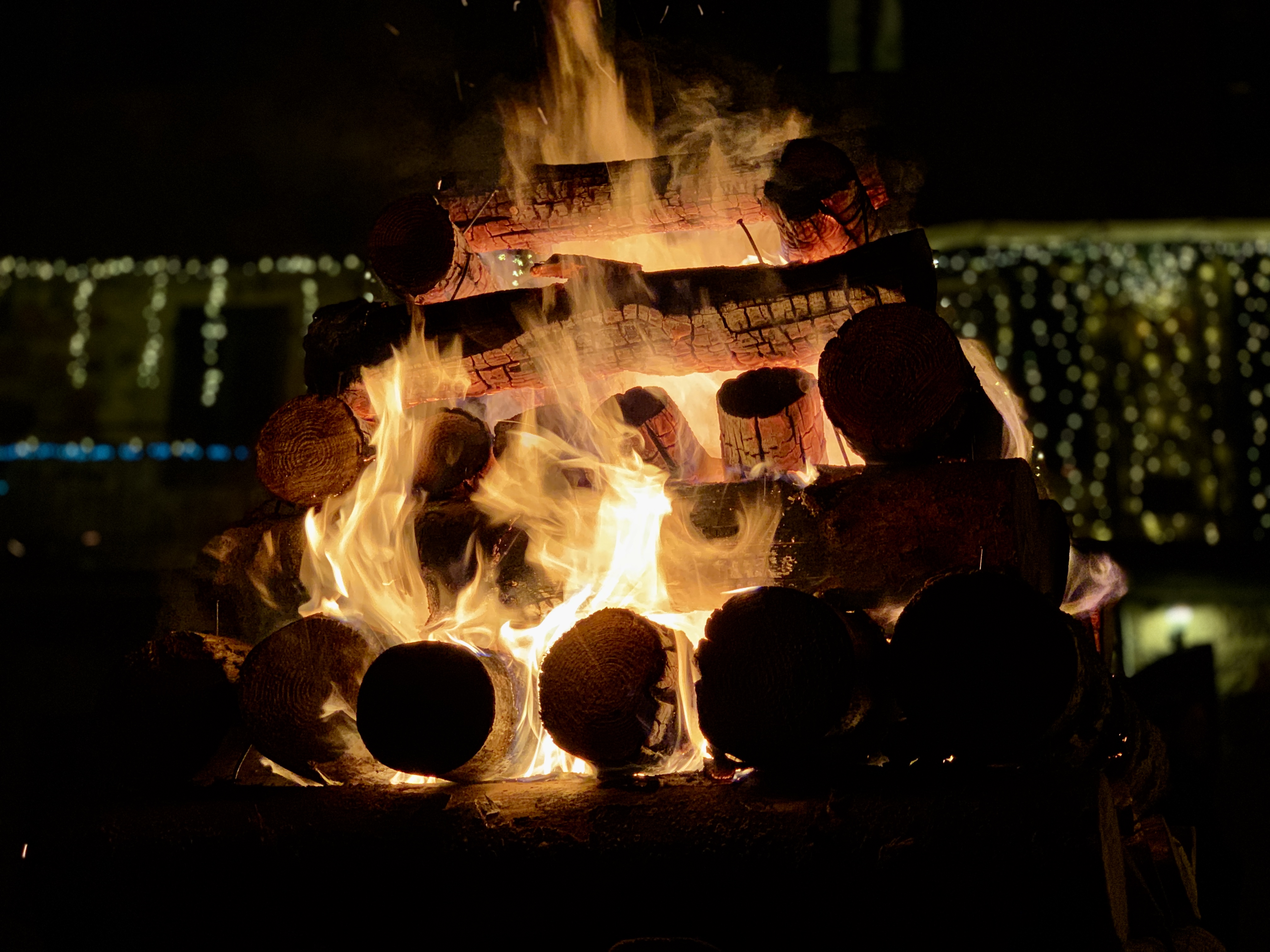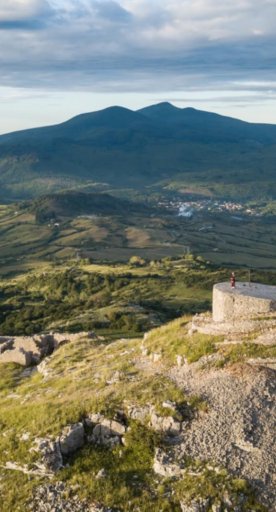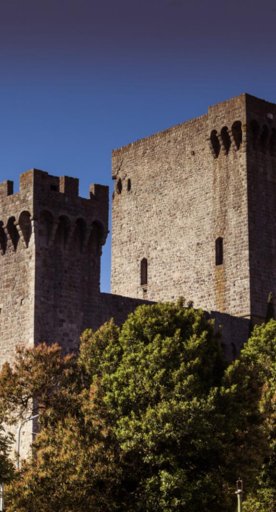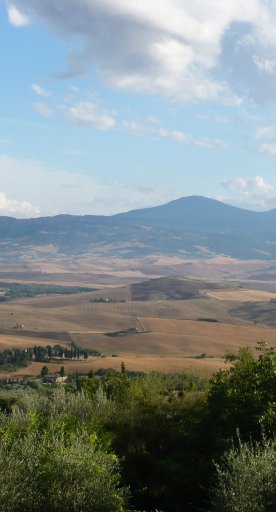
Arcidosso
One of the most characteristic villages of the Amiata, among churches, works of art and the imposing Aldobrandesca Fortress
Arcidosso is one of the most picturesque villages on Mount Amiata. Imposing and characteristic, the oldest part of the village is characterized by the presence of the Aldobrandesca Fortress, which towers at the top of the village.
The name Arcidosso is first found in a document from 860 and it was related to some houses and farms owned by the Abbey of San Salvatore. Its name probably comes from the Latin Arx and Dossum, Fortress on the hump.
Historical background
Recent archaeological studies have established that when around 1100 the Aldobrandeschi decided to build the main tower, the fortress already possessed a two-story stone palace most likely built by Marquis Ugo of Tuscany between 970 and 995.
The construction of the first nucleus of the Castle around which the village would develop can therefore be dated around the year 1000. From the 11th to the 14th century, it was a domain of the Aldobrandeschi counts, who transformed and enlarged it by raising the palace by two floors, building its towers and its two crenellated walls, also equipped with towers; it became an important military fortress, an extreme bastion against Siena's penetration in the Amiatino territory.
The town was besieged in 1331 by the Sienese commanded by Guidoriccio da Fogliano, with an army of 4,000 infantrymen and 400 horsemen. In the second half of the 16th century, following the final fall of Siena, the place was incorporated into the Grand Duchy of Tuscany and came under the Medici state, following its fortunes from then on.
Recent archaeological studies have established that when around 1100 the Aldobrandeschi decided to build the main tower, the fortress already possessed a two-story stone palace most likely built by Marquis Ugo of Tuscany between 970 and 995.
The construction of the first nucleus of the Castle around which the village would develop can therefore be dated around the year 1000. From the 11th to the 14th century, it was a domain of the Aldobrandeschi counts, who transformed and enlarged it by raising the palace by two floors, building its towers and its two crenellated walls, also equipped with towers; it became an important military fortress, an extreme bastion against Siena's penetration in the Amiatino territory.
The town was besieged in 1331 by the Sienese commanded by Guidoriccio da Fogliano, with an army of 4,000 infantrymen and 400 horsemen. In the second half of the 16th century, following the final fall of Siena, the place was incorporated into the Grand Duchy of Tuscany and came under the Medici state, following its fortunes from then on.
What to see in Arcidosso
Upon arriving in Arcidosso, one of the first things that grabs your attention is the impressive Monument to the Fallen at Work. To the right of the steps is a stone showing where David Lazzaretti, the Amiata Prophet, was killed in 1878.
Before entering the ancient village, it is worth stopping at the church of Madonna delle Grazie (Our Lady of Grace) (or Madonna dell’Incoronata - Our Lady of the Crowned), one of the holiest sanctuaries in the Amiata. Several works of art are featured here, all from the Sienese school. Prominent are the Virgin in Glory between Saints Sebastian and Rocco by Ventura Salimbeni and an early 15th-century Madonna and Child from the Palace of the Capitaneria, now beautifully displayed on the high altar.
Immediately outside the Porta Talassese is the little gem of the Sant’Andrea Church, dating back to 1118.
Along the road that leads to the village stands an intriguing neogothic fountain in cast iron, crafted in Follonica in the grand ducal foundries. A few ramps along and you’ll find yourself at the bottom of the Fortress, looking out over a quiet little square.
The Aldobrandesca Fortress is one of the oldest and best-preserved medieval castles in Amiata. Don't miss a visit to this important historical building, which houses the David Lazzaretti Museum, the Medieval Landscape Museum and the Museum of Oriental Art and Culture (MACO) inside.
At this point, it is time to discover the cobblestone streets that form the heart of the historic center. Among them you will notice the medieval church of San Niccolò. A downhill slope leads to the Terziere del Codaccio neighborhood and the San Leonardo church, built in the 12th century and reworked in the 16th century. The interior, which was destroyed in the Second World War, houses a number of important paintings including the Decollazione di San Giovanni Battista (Beheading of St. John the Baptist) (1588-89) by Francesco Vanni. On the road to Montelaterone, a downhill section among beautiful chestnut groves leads to the Parish church of Santa Maria in Làmulas, built in 1268 on the remains of an older building. Despite the remodeling which already began in the second half of the 13th century and modern restorations, it is one of the most significant examples of Romanesque architecture in southern Tuscany.
Upon arriving in Arcidosso, one of the first things that grabs your attention is the impressive Monument to the Fallen at Work. To the right of the steps is a stone showing where David Lazzaretti, the Amiata Prophet, was killed in 1878.
Before entering the ancient village, it is worth stopping at the church of Madonna delle Grazie (Our Lady of Grace) (or Madonna dell’Incoronata - Our Lady of the Crowned), one of the holiest sanctuaries in the Amiata. Several works of art are featured here, all from the Sienese school. Prominent are the Virgin in Glory between Saints Sebastian and Rocco by Ventura Salimbeni and an early 15th-century Madonna and Child from the Palace of the Capitaneria, now beautifully displayed on the high altar.
Immediately outside the Porta Talassese is the little gem of the Sant’Andrea Church, dating back to 1118.
Along the road that leads to the village stands an intriguing neogothic fountain in cast iron, crafted in Follonica in the grand ducal foundries. A few ramps along and you’ll find yourself at the bottom of the Fortress, looking out over a quiet little square.
The Aldobrandesca Fortress is one of the oldest and best-preserved medieval castles in Amiata. Don't miss a visit to this important historical building, which houses the David Lazzaretti Museum, the Medieval Landscape Museum and the Museum of Oriental Art and Culture (MACO) inside.
At this point, it is time to discover the cobblestone streets that form the heart of the historic center. Among them you will notice the medieval church of San Niccolò. A downhill slope leads to the Terziere del Codaccio neighborhood and the San Leonardo church, built in the 12th century and reworked in the 16th century. The interior, which was destroyed in the Second World War, houses a number of important paintings including the Decollazione di San Giovanni Battista (Beheading of St. John the Baptist) (1588-89) by Francesco Vanni. On the road to Montelaterone, a downhill section among beautiful chestnut groves leads to the Parish church of Santa Maria in Làmulas, built in 1268 on the remains of an older building. Despite the remodeling which already began in the second half of the 13th century and modern restorations, it is one of the most significant examples of Romanesque architecture in southern Tuscany.
Nearby
Lovers of spirituality will not fail to visit, in the municipal territory of Arcidosso, Mount Labbro, which in addition to its relevant ecological interest (the place is not coincidentally protected by the Mount Labbro Nature Reserve) is known for hosting on its summit the Giurisdavidica Tower, all that remains of the religion founded in the 1800s by David Lazzaretti.
The Monte Amiata Faunistic Park, also in the Reserve, is the perfect place for a day with the family. While walking along paths surrounded by greenery, you might be lucky enough to catch a glimpse of deer, fallow deer, roe deer, mouflons in their natural environment.
On the slopes of the same mountain has been present since the 1980s the Merigar West Temple - the spiritual refuge of an important Tibetan community.
Lovers of spirituality will not fail to visit, in the municipal territory of Arcidosso, Mount Labbro, which in addition to its relevant ecological interest (the place is not coincidentally protected by the Mount Labbro Nature Reserve) is known for hosting on its summit the Giurisdavidica Tower, all that remains of the religion founded in the 1800s by David Lazzaretti.
The Monte Amiata Faunistic Park, also in the Reserve, is the perfect place for a day with the family. While walking along paths surrounded by greenery, you might be lucky enough to catch a glimpse of deer, fallow deer, roe deer, mouflons in their natural environment.
On the slopes of the same mountain has been present since the 1980s the Merigar West Temple - the spiritual refuge of an important Tibetan community.
Typical products of Mount Amiata
Arcidosso falls within the production territory of the Chestnut of Mount Amiata PGI characterized by its delicate and sweet flavor due to the volcanic soils of the area.
Taste the roasted chestnuts as well as the castagnaccio (chestnut cake) and polenta prepared with chestnut flour.
Arcidosso falls within the production territory of the Chestnut of Mount Amiata PGI characterized by its delicate and sweet flavor due to the volcanic soils of the area.
Taste the roasted chestnuts as well as the castagnaccio (chestnut cake) and polenta prepared with chestnut flour.
What’s nearby?
Amiata











